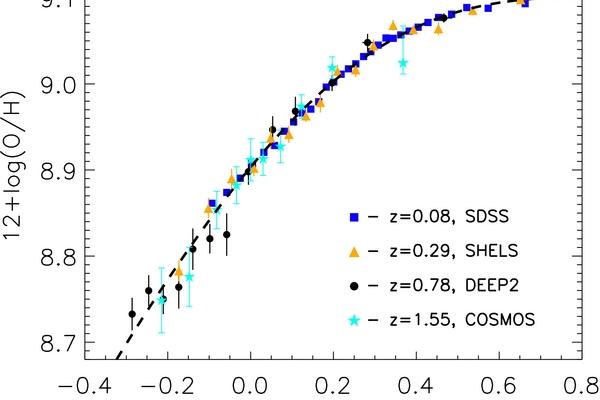
The Chemical Evolution of Star-Forming Galaxies
Jabran Zahid - Harvard-Smithsonian Center for Astrophysics
All the heavy elements in the universe are formed by massive stars within galaxies. These heavy elements are recycled back into the interstellar medium of galaxies via stellar winds and supernovae. Observations of nebular emission allow us to measure the abundance of heavy elements in the gas-phase of galaxies out to high redshifts. These observations provide important constraints for gas flows in and out of galaxies and star formation, key processes governing the formation and evolution of galaxies. The gas-phase oxygen abundance scales with stellar mass such that more massive galaxies exhibit higher gas-phase oxygen abundance. This relation is known as the mass-metallicity relation and is a key scaling relation for understanding galaxy evolution. I will show measurements of the mass-metallicty relation and present a theoretical model which explains the origin of this important relation. I will argue that the origin and evolution of the mass-metallicity relation interpreted with the theoretical model I develop provides a new paradigm for understanding the chemical evolution of star-forming galaxies.
Coffee and Donuts served at 2:00pm in 4054 McPherson Lab
